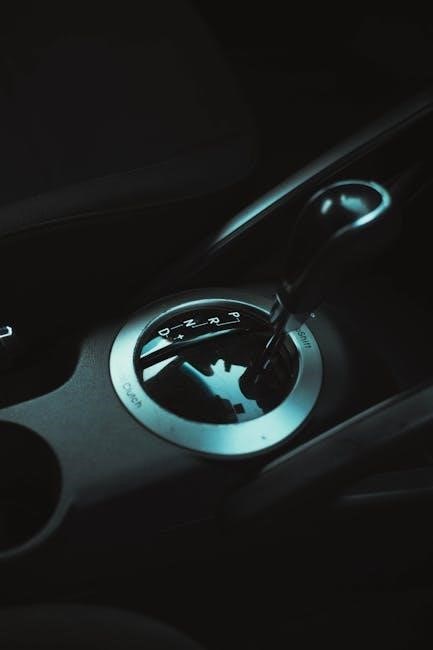A manual transmission, also known as a stick shift, is a gearbox requiring driver input to change gears using a clutch pedal and shift lever. It offers precise control, enhanced driver engagement, and a direct connection to the vehicle’s mechanics, making it a favorite for enthusiasts seeking a more immersive driving experience.
Definition and Basic Functionality
A manual transmission is a gearbox requiring driver input to change gears. It uses a clutch pedal and a shift lever, allowing the driver to manually select gears. The clutch disconnects the engine from the transmission, enabling gear changes. The driver presses the clutch, moves the lever to the desired gear, and releases the clutch while accelerating. This system provides direct control over gear selection, requiring coordination and skill. It contrasts with paddle shift transmissions, which use electronic controls for gear changes, offering a different driving experience.
History and Evolution
The manual transmission has a rich history, dating back to the early 20th century. Initially, it was a basic system with limited gears, evolving over time to include synchromesh technology in the 1930s for smoother shifting. The 1980s saw the introduction of fuel-efficient, lightweight designs. Despite advancements, the core functionality remains unchanged, with drivers still using a clutch and shift lever. This contrasts with paddle shift systems, which emerged in the late 1990s, offering electronic gear changes and a different driving dynamic, thus marking a shift in transmission technology.
Driving Experience and Control
Manual transmissions provide a tactile driving experience, requiring coordination between the clutch pedal, gear lever, and accelerator. This engagement fosters a deeper connection with the vehicle, allowing drivers to feel more in control. The process of shifting gears manually demands attention and skill, particularly in dynamic driving situations. In contrast, paddle shift systems offer a more convenient experience, with clutchless shifting controlled by steering wheel-mounted paddles. While paddle shifts are faster and require less physical effort, they lack the mechanical feedback and driver involvement that manual transmissions deliver, making them feel less immersive for enthusiasts seeking a hands-on experience.
Paddle shift transmission integrates manual gear control with automatic convenience, using steering wheel-mounted paddles to shift gears electronically, blending driver engagement with modern automotive technology seamlessly.
Definition and Mechanism
Paddle shift transmission combines automatic convenience with manual control, using dual-clutch or single-clutch systems. Drivers change gears via steering wheel paddles, eliminating the need for a clutch pedal. The system automatically engages and disengages the clutch, enabling quick, seamless shifts. This mechanism provides a balance between driver engagement and ease of use, making it ideal for both daily driving and performance scenarios. The electronic interface ensures smooth transitions, while maintaining the dynamic feel of manual shifting without the physical effort of a traditional clutch.
History and Development
The paddle shift transmission originated in racing, with early systems emerging in the late 20th century. Initially used in Formula 1, it evolved into dual-clutch technologies for production cars. The first production dual-clutch transmission appeared in the 2000s, offering faster shifts than manual transmissions. Over time, paddle shift systems became mainstream, blending performance and convenience. This innovation transformed how drivers interact with their vehicles, providing a hybrid of manual control and automatic ease, thus reshaping the automotive industry’s approach to transmission design and driver engagement.
Driving Experience and Convenience
A manual transmission offers a hands-on driving experience, requiring the use of a clutch pedal and shift lever. This engagement allows drivers to feel more connected to the vehicle, especially during spirited driving. The clutch and gearshift provide tactile feedback, making every shift deliberate and satisfying for enthusiasts.
Paddle shift transmissions, while offering convenience, simplify the process by eliminating the clutch pedal. Drivers can focus on steering and acceleration, making it ideal for urban driving or heavy traffic. The ease of use and seamless shifting enhance comfort without compromising performance, appealing to those seeking a balance between control and practicality.
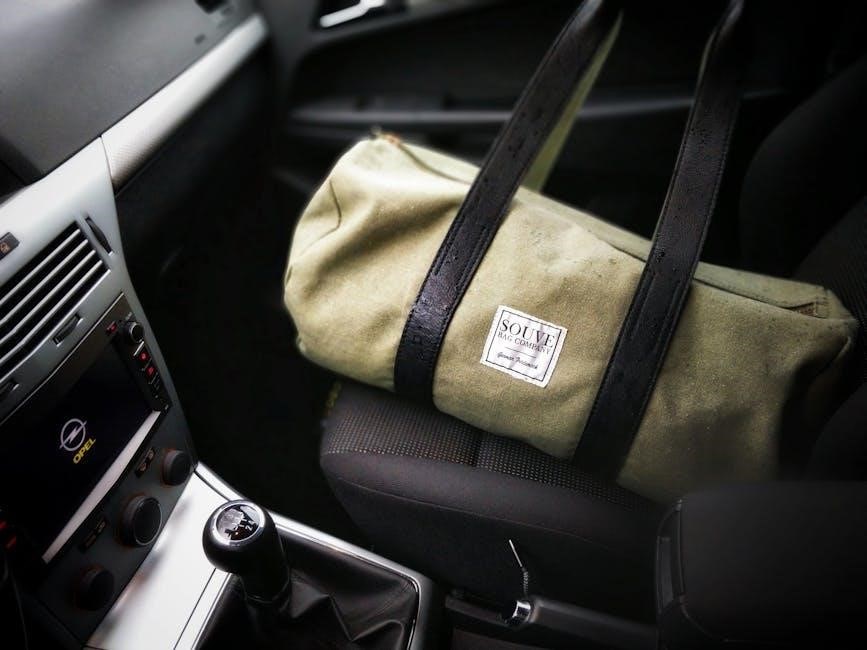
Key Differences Between Manual and Paddle Shift
Manual transmissions require a clutch pedal and manual gear shifting, offering precise control. Paddle shift transmissions use steering-wheel paddles for automatic gear changes, providing ease and convenience.
Driver Engagement and Involvement
Manual transmissions require active driver participation, with the clutch pedal and gearshift demanding constant attention, fostering a deeper connection to the vehicle. This engagement is often cited as a key reason enthusiasts prefer manuals, as it provides a sense of control and involvement in the driving process. In contrast, paddle shift systems, while offering some manual control, rely on electronic systems to execute shifts, reducing the physical interaction and mechanical feedback that many drivers enjoy.
Performance and Acceleration
Manual transmissions often deliver more direct control over acceleration, allowing skilled drivers to optimize gear shifts for maximum performance. Paddle shift systems, particularly dual-clutch setups, can execute faster gear changes than manuals, reducing lag and improving acceleration times. However, the performance advantage of paddle shifts depends on the driver’s ability to use them effectively. Manuals may struggle with inconsistent driver input, while paddle systems rely on electronic precision, making them more consistent in high-performance scenarios. Both options cater to different driving styles, with manuals appealing to purists and paddles suiting tech-driven enthusiasts.
Fuel Efficiency and Cost
Manual transmissions are often more fuel-efficient than paddle shift systems, especially in city driving, as they allow drivers to control gear ratios precisely. Paddle shift transmissions, particularly dual-clutch systems, can match or even surpass manual efficiency in optimal conditions. However, the cost of paddle shift systems is generally higher due to their complexity. Manual transmissions are typically more affordable to purchase and maintain, making them a cost-effective choice for budget-conscious drivers. Overall, manuals offer better value, while paddle shifts prioritize convenience over economy.

Manual Transmission: Pros and Cons
- Pros: Better fuel efficiency, lower purchase cost, and increased driver engagement.
- Cons: Requires manual skill, can be stressful in heavy traffic, and less convenient for casual driving.
Advantages of Manual Transmission
Manual transmissions offer better fuel efficiency, lower purchase costs, and increased driver engagement. They provide precise control over gear shifts, enhancing performance in diverse driving conditions. Additionally, manual transmissions often require less maintenance than automatic or paddle-shift systems, making them more cost-effective in the long run. For driving enthusiasts, the tactile experience of shifting gears manually creates a stronger connection to the vehicle, fostering a more immersive and satisfying driving experience overall.
Disadvantages of Manual Transmission
Manual transmissions can be less convenient in heavy traffic, requiring constant use of the clutch and gearshift, which may lead to driver fatigue. They also demand more skill and practice to master, especially for inexperienced drivers. Additionally, manual transmissions lack the ease of use offered by paddle-shift systems, as they require manual clutch operation and precise timing for smooth shifts. This can make them less accessible for new drivers or those seeking a more relaxed driving experience in urban environments.

Paddle Shift Transmission: Pros and Cons
Paddle shift transmissions offer convenience and ease of use, especially in heavy traffic, as they eliminate the need for a clutch pedal. They provide faster gear shifts and seamless acceleration, enhancing performance. However, they may lack the direct driver control and engagement of manual transmissions, making them less appealing to driving enthusiasts seeking a more immersive experience.
Advantages of Paddle Shift
Paddle shift transmissions offer unparalleled convenience and ease of use, particularly in heavy traffic conditions. They eliminate the need for a clutch pedal, reducing driver fatigue and allowing for seamless gear changes. Paddle shifters provide faster and smoother acceleration compared to traditional automatics, making them ideal for performance-driven scenarios. Additionally, they enable drivers to maintain control over gear shifts without the physical effort required by manual transmissions, strike a balance between convenience and driver engagement, and often improve fuel efficiency in city driving conditions.
Disadvantages of Paddle Shift
Paddle shift transmissions can be more expensive to purchase and maintain compared to manual transmissions. They often rely on complex electronics and dual-clutch mechanisms, which can be prone to malfunctions. Additionally, paddle shift systems lack the tactile feedback and mechanical connection offered by manual transmissions, which can be a drawback for driving purists. They also require specialized knowledge for repairs, increasing costs and availability of skilled technicians. Furthermore, paddle shifters may not perform as efficiently in low-speed or stop-and-go traffic, potentially leading to frustration for some drivers.
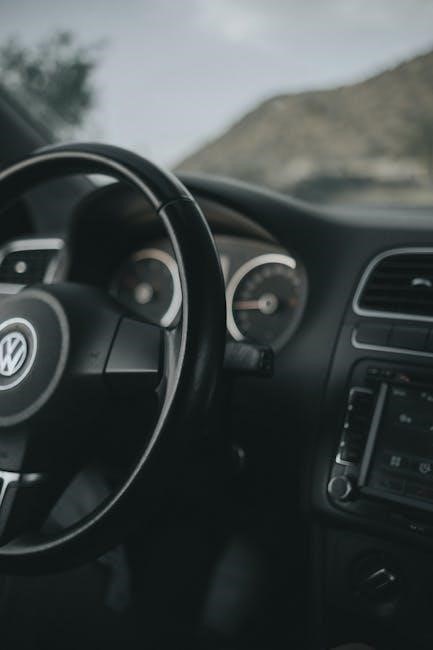
Comparison of Maintenance and Reliability
Manual transmissions are generally simpler and more reliable, requiring less maintenance than paddle shift systems. Paddle shifters involve complex electronics, increasing potential for malfunctions and repair costs;
Maintenance Requirements for Manual Transmissions
Manual transmissions are relatively straightforward to maintain, with fewer components compared to paddle shift systems. The clutch is a key part requiring periodic inspection and replacement, typically every 50,000 to 100,000 miles. Regular fluid changes, usually every 30,000 to 60,000 miles, are essential for lubrication and gear health. Manual transmissions have fewer electronic components, reducing the risk of complex malfunctions. Overall, manual transmissions are more reliable and cost-effective in maintenance, making them a practical choice for drivers seeking simplicity and durability.
Maintenance Requirements for Paddle Shift Transmissions
Paddle shift transmissions, particularly dual-clutch systems, require more specialized maintenance due to their complex electronic and hydraulic components. Regular software updates are essential to ensure smooth operation, while transmission fluid changes are typically needed every 30,000 to 60,000 miles. Inspections of the clutch and actuators are recommended to prevent wear and tear. Additionally, the automated clutch in paddle shift systems can wear faster than manual transmissions, leading to more frequent replacements. Specialized tools and expertise may be required for repairs, increasing maintenance costs compared to manual transmissions.
Reliability and Longevity
Manual transmissions are often more reliable and longer-lasting than paddle shift systems due to their simpler mechanical design. With fewer electronic components, manual transmissions are less prone to failure and require less complex repairs. Paddle shift transmissions, especially dual-clutch systems, can be less reliable over time, with issues like clutch wear and software glitches becoming more common. However, advancements in technology have improved the durability of paddle shift systems, though they still generally do not match the longevity of well-maintained manual transmissions.
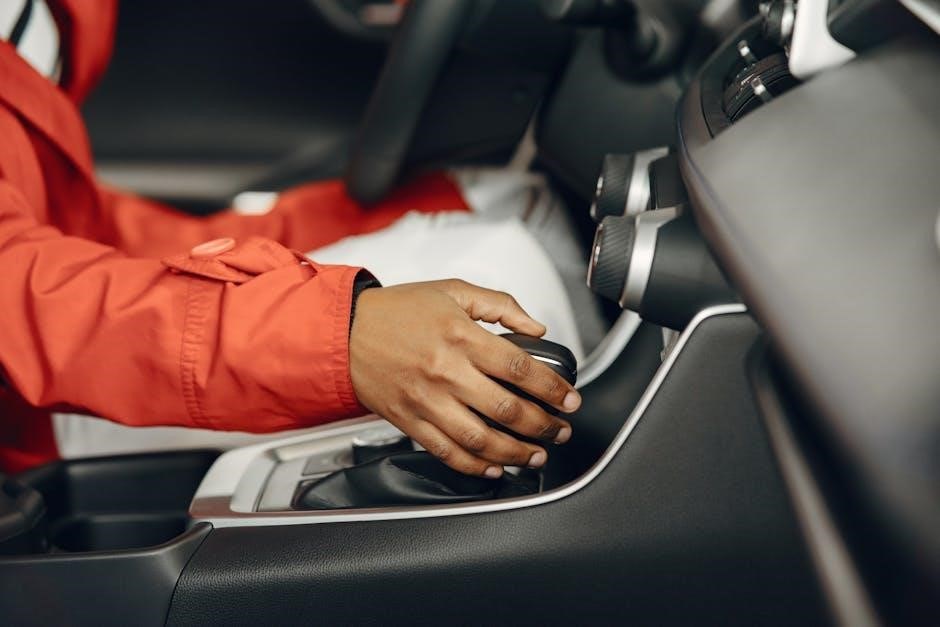
Technology and Innovation
Modern manual transmissions feature refined gear designs and lightweight materials for smoother operation. Paddle shift systems, like dual-clutch transmissions, offer rapid shifting and automation, enhancing performance and efficiency.
Modern Manual Transmission Systems
Modern manual transmissions incorporate advanced technologies like dual-mass flywheels and optimized gear ratios for smoother shifting. Lightweight materials reduce weight and improve fuel efficiency. Some systems feature rev-matching technology, which automatically adjusts engine speed during downshifts for seamless control. Additionally, modern manuals often include gear indicators and electronic controls to enhance driver experience. These innovations maintain the classic feel of manual driving while integrating contemporary advancements for better performance and usability.
Advanced Paddle Shift Technologies
Modern paddle shift systems utilize dual-clutch transmissions for rapid, seamless gear changes, enhancing performance and driver control. These technologies integrate with advanced engine management systems to optimize acceleration and responsiveness. Some models incorporate predictive shifting, adapting to driving conditions for improved efficiency. Additionally, paddle shifters often feature rev-matching capabilities, ensuring smooth downshifts. These innovations bridge the gap between manual and automatic transmissions, offering a blend of convenience and dynamic driving engagement, making them appealing to both enthusiasts and everyday drivers seeking enhanced performance without manual effort.
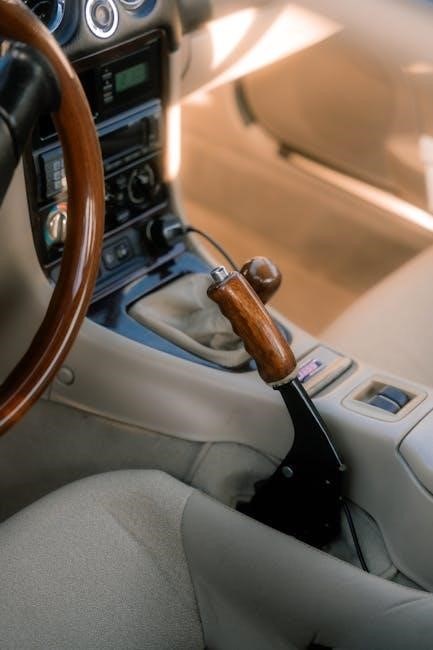
Driver Preference and Use Cases
Driver preferences often divide between manual and paddle shift based on lifestyle. Manuals suit thrill-seekers and purists, while paddle shifts appeal to those blending convenience with sporty driving.

When to Choose Manual Transmission
Manual transmissions are ideal for driving enthusiasts who value control and connection to the vehicle. They excel in scenarios requiring precise gear shifts, such as sporty driving or hilly terrain. Manuals often provide better fuel efficiency and lower costs, making them a practical choice for budget-conscious drivers. Additionally, manual transmissions are preferred in racing or performance driving, where driver engagement and quick shifts are crucial. For those who enjoy the tactile experience of driving, manuals offer a more immersive and rewarding experience compared to paddle shift systems.
When to Choose Paddle Shift
Paddle shift transmissions are perfect for drivers seeking convenience and ease without sacrificing performance. They are ideal for urban driving, where frequent gear changes are unnecessary, offering a seamless and relaxed experience. Paddle shifters also excel in stop-and-go traffic, allowing hands-free shifting while keeping both hands on the wheel. For those who prioritize comfort and simplicity, paddle shift systems provide an excellent balance between automatic ease and the ability to manually override gears when needed, making them versatile for daily commuting and occasional spirited driving.
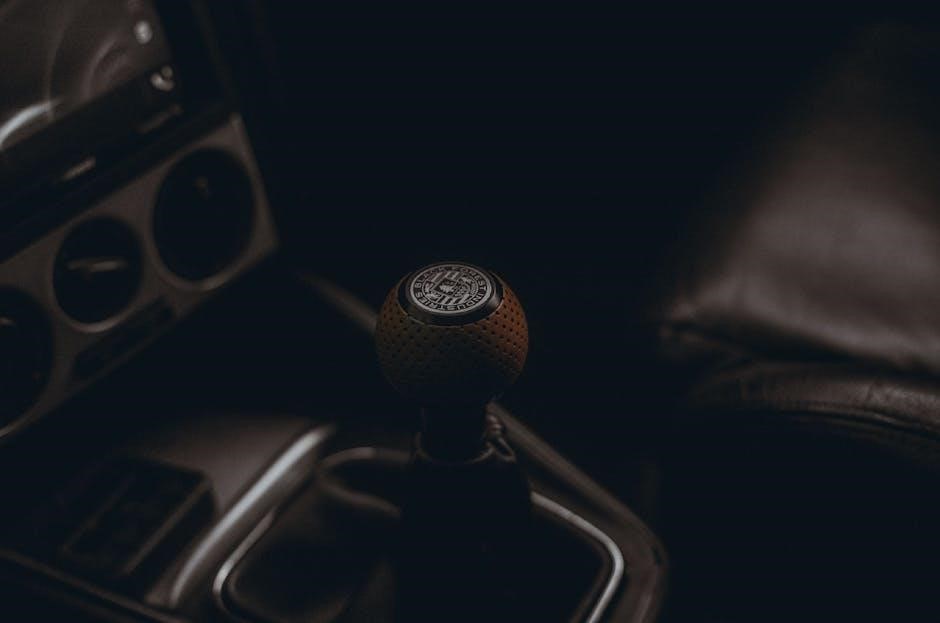
Environmental Impact
Manual and paddle shift transmissions both aim to reduce fuel consumption and emissions. Modern paddle shift systems often achieve better efficiency through optimized gear shifting, promoting eco-friendly driving solutions.
Fuel Efficiency and Emissions
Manual transmissions often provide better fuel efficiency due to direct driver control over gear shifts, optimizing engine performance. Paddle shift systems, especially dual-clutch designs, offer seamless transitions, reducing emissions and enhancing efficiency. Modern paddle shifters are engineered to maintain optimal RPM levels, minimizing fuel waste and lowering emissions. In city driving, paddle shifters excel, while manuals shine on highways. Both technologies aim to balance performance and eco-friendliness, with advancements in automation further improving environmental impact, making them viable options for drivers prioritizing efficiency and sustainability.
Sustainability and Future Trends
Manual and paddle shift transmissions are evolving to meet environmental demands. Hybrid systems integrating both technologies aim to reduce emissions while maintaining performance. Future trends suggest a shift toward eco-friendly designs, with paddle shifters potentially dominating due to their seamless automation. Manual transmissions may decline as automakers prioritize efficiency and convenience. However, innovations like dual-clutch systems could blend the best of both worlds, offering sustainable solutions without sacrificing driver engagement. The industry is moving toward greener, high-tech options, balancing performance with environmental responsibility.
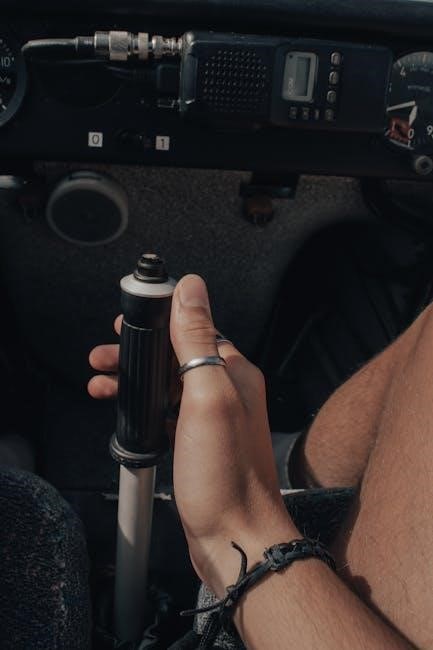
Market Trends and Consumer Demand
Manual transmissions are declining in popularity, while paddle shifters are rising due to their convenience and performance balance. Enthusiasts still favor manuals, but automation dominates demand.
Popularity of Manual vs. Paddle Shift
Manual transmissions are less popular today, with paddle shifters gaining favor for their convenience and performance. While enthusiasts cherish manuals for their driving engagement, most consumers prefer automatics with paddle shifters for ease. The shift reflects broader market trends, as automatics dominate new car sales. However, manuals retain a niche appeal, especially in sporty or classic vehicles. Paddle shifters, offering a balance of automation and control, are increasingly preferred, aligning with modern drivers’ desire for both comfort and dynamic driving experiences. This trend is expected to persist, influenced by technological advancements and evolving consumer preferences.
Future of Manual and Paddle Shift Transmissions
The future of manual and paddle shift transmissions is evolving with technology. Manuals may remain niche, favored by enthusiasts, while paddle shifts could advance with hybrid and electric systems. Automakers are refining dual-clutch and automated manual transmissions for faster, smoother shifts. Sustainability and efficiency are key focuses, with paddle shifters potentially integrating with EVs for enhanced performance. However, manuals face challenges as automatics dominate, though they may persist in specialized markets. Both transmissions will adapt to meet changing driver demands and environmental regulations, ensuring their relevance in an automotive landscape increasingly shaped by innovation and sustainability.
The debate between manual and paddle shift transmissions highlights their unique appeal. Manuals offer tactile engagement, while paddles provide convenience and advanced technology. As automotive innovation progresses, both transmissions will evolve, catering to different driver preferences and future mobility needs.
Final Thoughts on Manual vs. Paddle Shift
Manual and paddle shift transmissions cater to different driving styles and preferences. Manuals offer a tactile, engaging experience, appealing to purists who value control and connection. Paddle shifts provide convenience and advanced technology, suiting drivers who prioritize ease without sacrificing performance. Both systems have their strengths, and the choice depends on individual needs. As automotive technology evolves, these transmissions will continue to adapt, offering drivers more options to align with their lifestyle and driving aspirations.
Recommendations for Drivers
For enthusiasts seeking a hands-on experience, manual transmissions are ideal. They offer better fuel efficiency and cost-effectiveness. Those prioritizing convenience and performance should consider paddle shift systems, especially in high-traffic areas. Novice drivers might find paddle shifts easier to master initially. Ultimately, the choice should align with lifestyle, driving habits, and personal preference. Test-driving both options is advisable to determine the best fit. Balancing performance, convenience, and cost will help drivers make an informed decision tailored to their needs and preferences.
